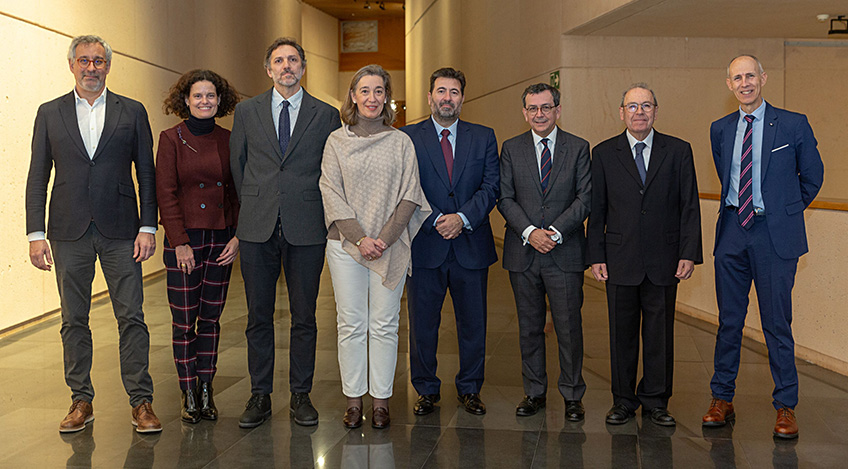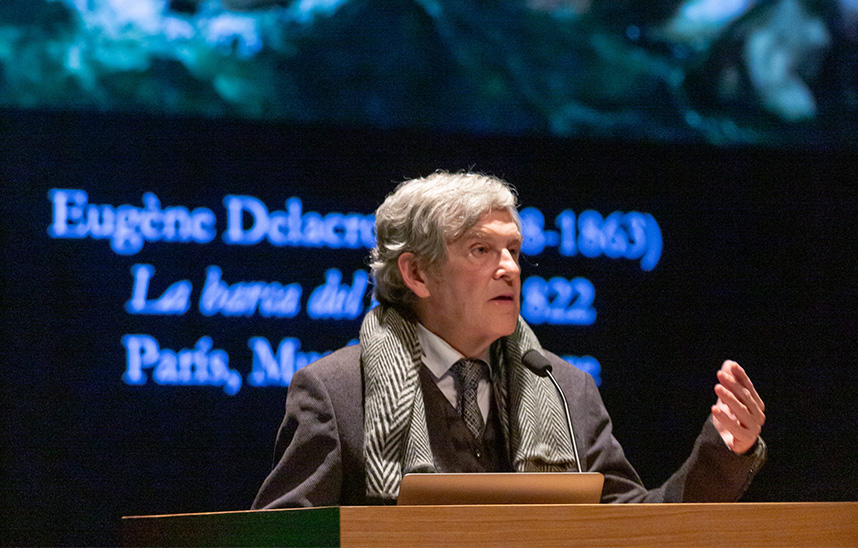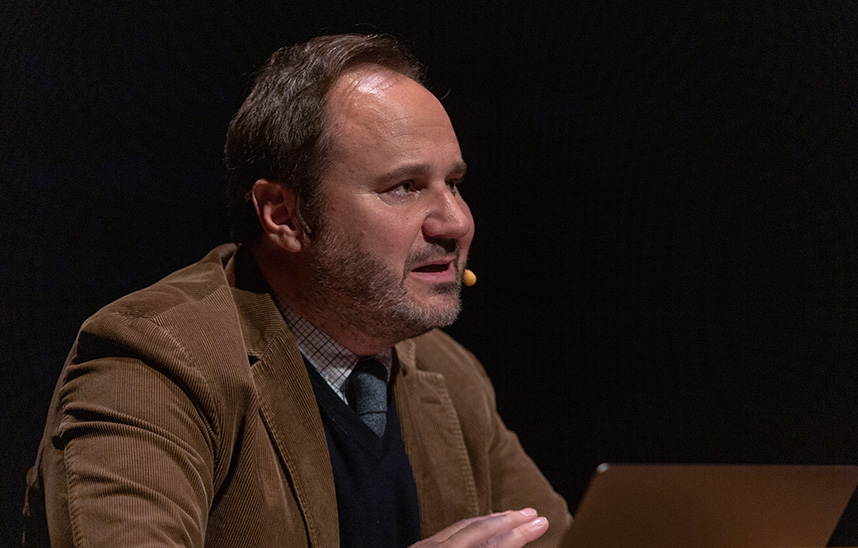The artistic production of the late Gothic period is the focus of the first session of lecture series of the Fundación Amigos Museo del Prado in Pamplona.
It was given by Joan Molina, Head of department of Spanish Gothic Painting of the national gallery and director of this VIII edition.
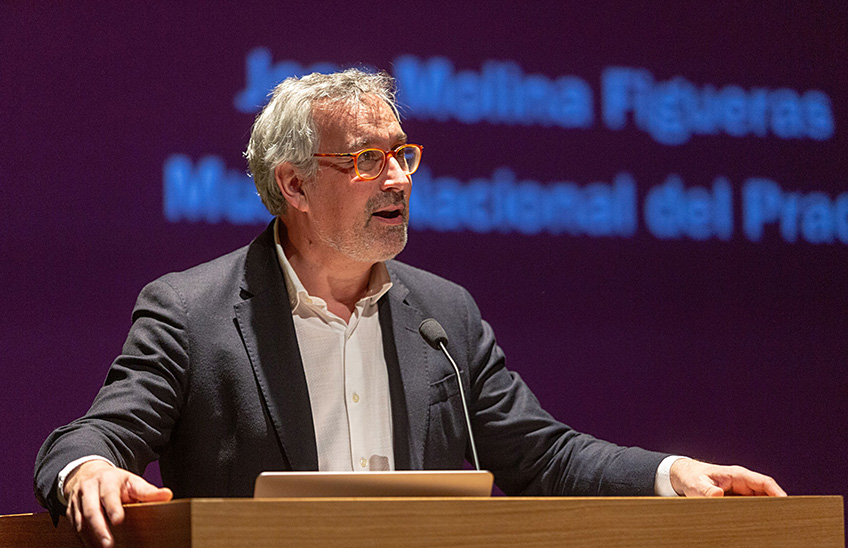
FotoManuelCastells/Joan Molina, Head of department of Spanish Gothic Painting at the Prado Museum and director of the VIII edition of the series, was in charge of the first session.
About 300 people have been given quotation at the University to delve into the secrets of the art of the fifteenth century, a period to which has been dedicated the lecture series Francisco Calvo Serraller that the Friends of the Museo del Prado Foundation is organizing in Pamplona, in partnership with the School of Philosophy and Letters of the academic center.
The opening ceremony, held yesterday, Wednesday, January 24, was chaired by Ángel J. Gómez Montoro, president of the board of trustees of the Museo Universidad de Navarra; Julia Pavón, dean of the School of Philosophy y Letras; Alberto Pancorbo, Director of Activities of the Fundación Amigos del Museo del Prado; and Iñigo Martínez, Director General of Viscofan España, business sponsor of the series, which also has the partnership of the Fundación Diario de Navarra. Joan Molina, Head of department of Spanish Gothic Painting at the Prado Museum, was the first speaker of the cycle, which has now reached eight editions in the Navarrese capital. His presentation was position by Javier Azanza, Full Professor of Art History at the University of Navarra.
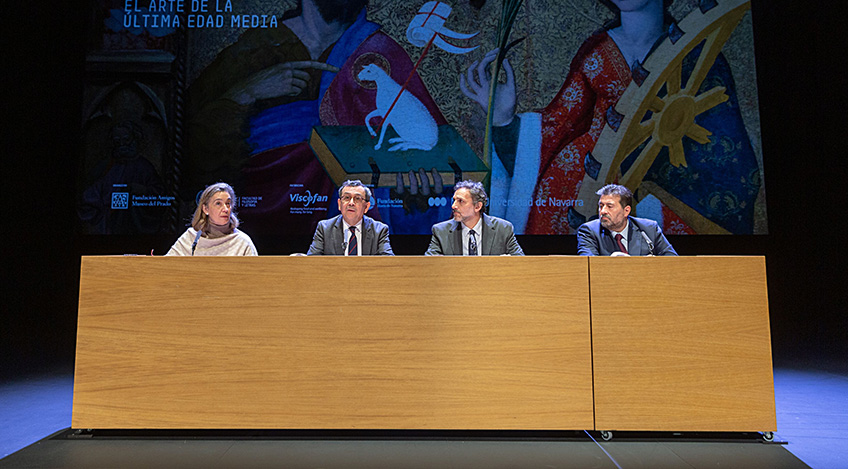
As the speaker explained at the beginning of his speech, "the last stage of the Age average was a particularly fertile period in terms of artistic production, but it is little known, as it has been obscured by the Italian Renaissance". However, he pointed out that "in the works conceived during this time we have the door to the renovation that the masters of Flemish painting and some of the most outstanding artists of the Italian Quattrocento will bring about".
During the session, degree scroll "Between reality and dream. Court art in the twilight of the Age average", the expert showed the attendees some of the most relevant artistic productions of the international Gothic developed for courtly residences and palaces. "In this period there was an explosion of courtly sophistication, with artistic proposals marked by heraldic and chivalric exaltation, by symbolic naturalism, where the religious and the profane merge". He also explained how the creations of the period went through multiple aesthetic options: "The autumn of the Gothic period cannot be interpreted as a metaphor of decadence or death; quite the contrary; it was a fertile, exuberant, exaggerated art, where the real ends up becoming fantastic," he concluded.
The next session will take place on Wednesday, January 31, at 19:00, in the theater of the Museum of the University of Navarra. It will be given by Josefina Planas, Professor of Art History at the University of Lleida, who will talk about the courtly leisure reflected in "Las muy ricas horas del Duque de Berry". On Wednesday 7, Fernando Gutiérrez Baños, Full Professor of Art History at the University of Valladolid, will give the discussion paper "Kings and nobles. A look at the Gothic painting of the Prado Museum". The series will end with the intervention of Javier Barón, Head of Conservation of 19th Century Painting at the Prado Museum, whose session will focus on "The fascination for the leave Age average in 19th century painting".
Tickets are still on sale at the website of the series, where you can also download the dossier of this edition at available , and at locker of the Museo Universidad de Navarra.
